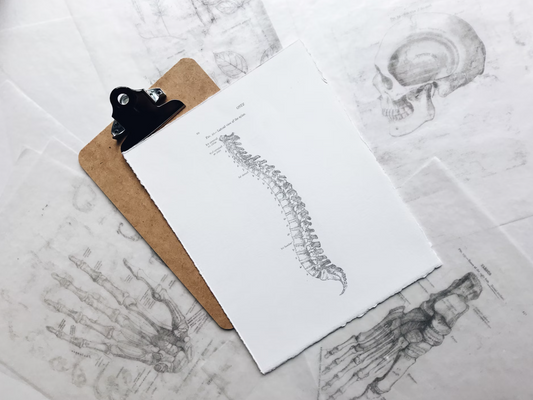Sleep and breathing are intrinsically connected, and optimizing your nighttime respiration can make a world of difference in the quality of your rest. Breathing well during sleep is essential for restoring energy, maintaining good health, and enhancing overall wellness. Poor nighttime breathing can lead to sleep disturbances, low energy, and a host of other health issues, so it’s important to take proactive steps to support optimal breathing. Here’s a guide on how to improve nighttime breathing for better sleep and rejuvenation.
1. Understand the Importance of Good Nighttime Breathing
When we sleep, our breathing patterns change and slow down, allowing the body to enter a restorative state. Poor breathing during sleep can disrupt these natural rhythms, leading to conditions like snoring, sleep apnea, and frequent awakenings. Over time, these issues can contribute to fatigue, mood imbalances, and weakened immune function. Understanding the basics of nighttime respiration can help you make targeted adjustments to improve airflow and create an environment conducive to restful sleep.
2. Optimize Your Sleeping Position
Your sleeping position plays a major role in your breathing. Some positions promote optimal airflow, while others can constrict your airways. Here are the best and worst positions for nighttime respiration:
- Back Sleeping: While sleeping on your back can promote even weight distribution, it can also cause the tongue and soft tissues to collapse back into the airway, particularly for snorers. Try propping up your head with an extra pillow or using an adjustable bed base to keep airways open.
- Side Sleeping: Side sleeping is often considered the best position for optimal breathing, especially for people with sleep apnea or snoring issues. Sleeping on the left side, in particular, may reduce acid re-flux, which can also improve breathing.
- Avoid Stomach Sleeping: While sleeping on your stomach may help with snoring, it places strain on the neck and spine, which can interfere with deep, relaxed breathing as your ribs have to work against gravity in this position.
If you’re trying to change your sleep position, consider using a body pillow for support and to prevent yourself from rolling over during the night.
3. Practice Nasal Breathing at Night
Nasal breathing, or breathing through the nose rather than the mouth, promotes better oxygen exchange and reduces the risk of snoring and other breathing interruptions. The nasal passages filter, humidify, and warm the air before it reaches the lungs, creating a more comfortable breathing experience.
How to Encourage Nasal Breathing:
- Try Mouth Taping: For those who tend to mouth breathe, a small piece of medical tape on the lips can encourage nasal breathing. Always consult a healthcare provider before trying this technique, especially if you have any respiratory conditions.
- Use a Humidifier: A humidifier can keep nasal passages from drying out, particularly if you live in a dry climate or use air conditioning or heating, which can dry out the air.
- Saline Rinse: Rinsing your nasal passages with a saline solution before bed can help clear any blockages, promoting easier nasal breathing throughout the night.
4. Create a Lung-Friendly Sleep Environment
Allergens, dust, and pet dander can block nasal passages and make it hard to breathe easily at night. Taking steps to reduce allergens in the bedroom can make a huge difference in nighttime respiration.
- Use Hypoallergenic Bedding: Hypoallergenic pillows and mattress covers can help minimize exposure to dust mites and other allergens that may interfere with breathing.
- Keep Pets Out of the Bedroom: Although cuddling with pets is comforting, their dander can trigger allergies and congestion.
- Air Purifiers: An air purifier with a HEPA (High-Efficiency Particulate Air) filter can help remove airborne allergens, making it easier to breathe deeply throughout the night.
5. Consider Breathing Exercises Before Bed
Practicing relaxation-focused breathing exercises before sleep can reduce stress, slow your breathing rate, and prepare your body for restful sleep. These exercises can help train your body to maintain steady, deep breaths throughout the night.
Effective Breathing Exercises for Better Sleep:
- 4-7-8 Breathing: Inhale for a count of 4, hold the breath for a count of 7, and exhale for a count of 8. This technique can help slow your heart rate and relax your mind, making it easier to fall asleep.
- Diaphragmatic Breathing: Also known as belly breathing, this technique engages the diaphragm for deep, steady breaths. Place one hand on your chest and one on your belly, and focus on moving only the belly as you breathe in and out.
- Box Breathing: Inhale for 4 counts, hold for 4 counts, exhale for 4 counts, and hold again for 4 counts. Repeat this cycle to promote relaxation and balance your breathing rhythm.
Practicing these exercises in a calm, dimly lit environment can signal to your body that it’s time for rest.
6. Manage Sleep Apnea and Snoring
Sleep apnea, a condition where breathing temporarily stops and starts during sleep, can greatly impact nighttime respiration and overall health. If you suspect sleep apnea (signs include loud snoring, gasping during sleep, and daytime fatigue), speak to a healthcare provider about getting a sleep study and exploring treatment options.
Common Sleep Apnea Treatments:
- CPAP (Continuous Positive Airway Pressure): CPAP therapy uses a machine to keep airways open by delivering a steady stream of air through a mask.
- Oral Appliances: These devices help position the jaw and tongue to maintain an open airway during sleep.
- Positional Therapy: For people with mild sleep apnea, sleeping in certain positions, like on the side, may reduce symptoms.
8. Monitor and Improve Sleep Quality with Technology
Wearable devices and sleep-tracking apps can provide insights into how well you’re breathing at night. Some devices can detect signs of disturbed breathing, oxygen levels, and even periods of restlessness. Monitoring these patterns can help you identify specific factors that may be affecting your breathing and sleep quality.
Recommended Sleep Trackers
- Bia Smart Sleep Mask: A smart sleep mask that tracks data while shielding your from disruptive light.
- Muse S Headband Sleep Tracker: A high-tech headband that tracks brain activity and overall sleep quality.
- Rise Science Sleep Tracker: A handy sleep-tracking app that is compatible with your wearable devices and process comprehensive sleep reports.
- Oura Ring: Tracks oxygen levels and overall sleep patterns, providing data on potential disturbances in respiration.
Conclusion
Optimizing nighttime breathing is one of the best ways to ensure that your sleep is truly restorative. By creating a lung-friendly sleep environment, adjusting your sleeping position, and incorporating pre-sleep breathing exercises, you can significantly enhance the quality of your sleep. If you struggle with chronic sleep or breathing issues, remember that help is available—consulting with a healthcare provider can open doors to treatments that could dramatically improve your nighttime breathing and sleep quality.
By taking these steps, you’ll be on your way to sleeping better and waking up refreshed and ready for the day. Breathe easy, sleep deeply, and feel the difference!




